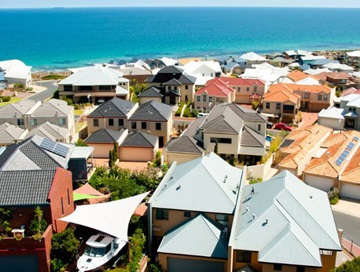Housing affordability declines in March 2023 quarter, but WA remains among the most affordable places for home owners and renters.
13 June 2023"Despite a decline in housing affordability, WA remained among the most affordable states and territories for home buyers and renters in the March 2023 quarter."

Despite a decline in housing affordability, WA remained among the most affordable states and territories for home buyers and renters in the March 2023 quarter, according to the latest REIA Housing Affordability Report.
The only state more affordable for home buyers was the Northern Territory.
In WA, the proportion of family income required to meet loan repayments* rose 0.6 percentage points to 34.5 per cent.
The decline in affordability was more a result of rising interest rates than soaring house prices.
“Interest rate rises have certainly affected affordability, but WA’s market remains remarkably resilient,” REIWA CEO Cath Hart said.
“This resilience has been supported by WA’s strong economy, low unemployment, growing population and relatively affordable housing.
“In particular, the affordability of housing has allowed the market to adjust to the 12 rate rises more easily than higher priced markets - it means lower deposits are required and mortgages are smaller so the changes are not as dramatic.
“However, WA’s market has not been completely unaffected. We have seen sales activity decline in the sub-$500,000 price bracket. These areas are where potential buyers and home owners are likely to be more greatly affected by cost of living and interest rate increases.”
Nationally, the proportion of family income required to meet loan repayments was 44.9 per cent. This equalled the worst affordability result since the Global Financial Crisis (GFC) era of September 2008.
South Australia saw the greatest increase in loan servicing pressure over the quarter, up 1.1 percentage points to 41 per cent. New South Wales home owners faced the greatest affordability challenge, requiring 55 per cent of their income to service monthly mortgage repayments.
Tasmania and the ACT both recorded slight improvements in housing affordability.
Home loans
First-home buyers made up 35.9 per cent of WA’s owner-occupier market in the March quarter.
They were less active than in the previous quarter, with the number of loans issued over the three-month period decreasing 13.1 per cent to 3,305. This was 30.9 per cent lower than the same time last year.
The average loan to first-home buyers increased to $399,879, up 2 per cent on the December 2022 quarter and 4.9 per cent annually.
The total number of new loans to owner-occupiers dropped to 9,194 in WA, 12.7 per cent less than the previous quarter and 25.9 per cent lower than 12 months ago. The average loan size was $478, 236. This was a decrease of 0.3 per cent over the quarter but an increase of 4.4 per cent over the year.

Rental affordability
Affordability for renters declined across the country, except in the ACT.
Nationally, the proportion of income required to meet median rent payments was 23 per cent. It was the worst affordability result for renters since September 2022, but was well short of the rental affordability crisis of the GFC when the proportion of income required to meet rent payments exceeded 26 per cent.
In WA, renters needed 21 per cent of their income for rent payments, making it the third most affordable state or territory after Victoria (19.9 per cent) and the ACT (20.8 per cent).
Tasmanian renters were the hardest hit with 28.9 per cent of their income going towards rent payments.
Ms Hart said while a lot had been made of rising rents in WA in the current challenging market, it was interesting to take a longer view.
“We know rental affordability has declined over the past five years (down 3.9 percentage points), with the median weekly rent rising from a low of $350 per week in 2018 to $550 now, but according to the report, WA’s rental affordability has actually improved 3.3 percentage points over 10 years,” she said.
“More recently the decline in affordability has been small, with the proportion of income required to meet rent payments up just 0.5 percentage points since the December quarter and 1.3 percentage points over the year.
“Looking at the home owner market, affordability has declined 6.5 percentage points over five years and 3.4 percentage points over 10 years.
“The recent changes have also been more marked, with affordability down 0.6 percentage points over the past three months and 8.5 percentage points since the March 2022 quarter.
“Again, the annual change is more a result of 10 interest rate rises in that period, than a significant change in house prices.”

*Based on a median weekly family income of $2,471 and an average monthly repayment of $3,697.

.tmb-rcarousel.jpg?sfvrsn=3cb48c0f_1)





.tmb-rcarousel.jpg?sfvrsn=c6c3d87a_1)

